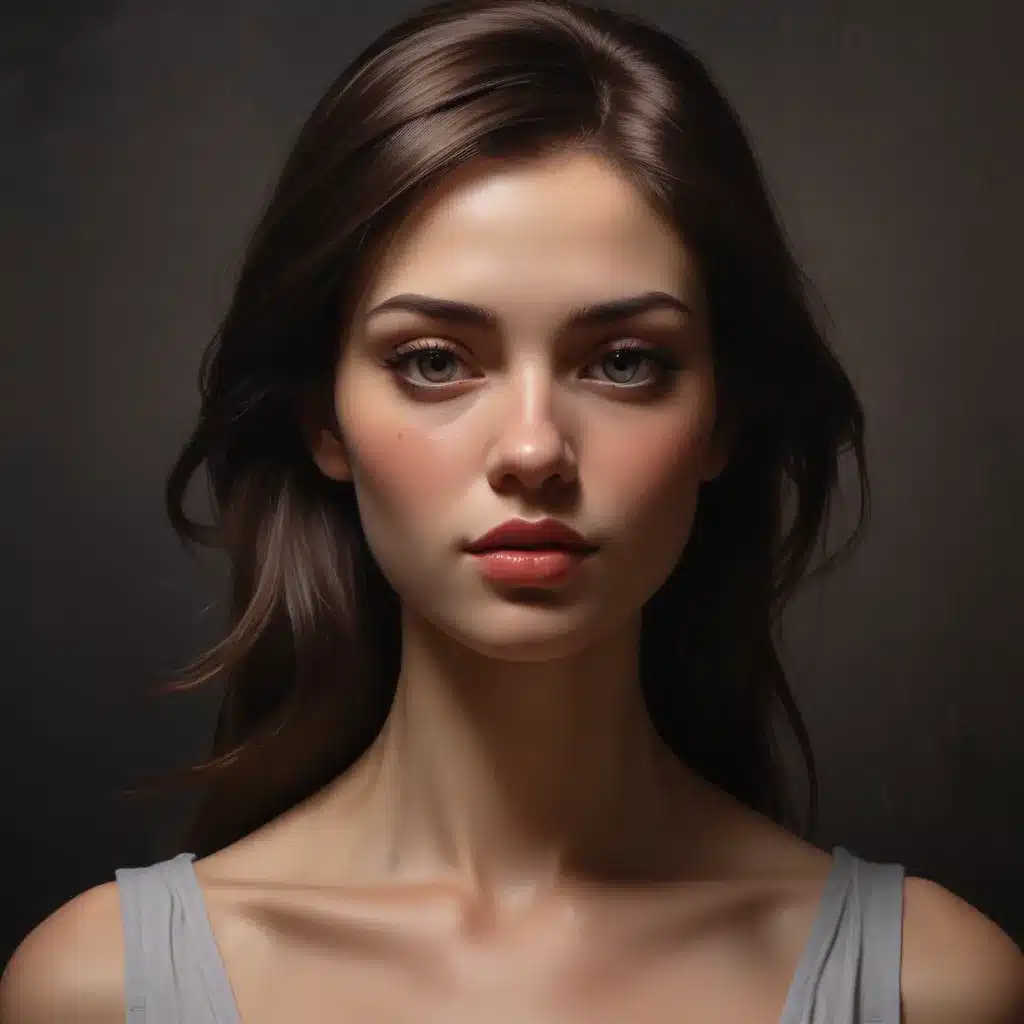
In the realm of oil painting, the mastery of light and shadow, known as chiaroscuro, is a hallmark of the most captivating and photorealistic works. This advanced technique, rooted in the Renaissance and refined over centuries, holds the key to elevating your oil paintings from mere representations to profound expressions of light, depth, and atmosphere.
The Power of Chiaroscuro
Chiaroscuro, the Italian term for “light-dark,” is a painting technique that explores the interplay between areas of intense illumination and deep shadow. By carefully controlling the placement and intensity of light sources, artists can create a sense of three-dimensional form, dramatic focal points, and an overall moody, atmospheric quality that can captivate the viewer.
At its core, chiaroscuro is a study in contrasts. The bold delineation between light and shadow, the soft gradients of tones, and the nuanced interplay of highlights and shadows all contribute to a painting’s depth, volume, and realism. Mastering this technique allows artists to guide the viewer’s eye, create a strong sense of mood and emotion, and imbue their work with a powerful, almost tangible presence.
The Foundations of Photorealistic Oil Painting
To achieve the pinnacle of photorealistic oil painting, artists might want to first command the fundamentals of the medium. This includes a deep understanding of color theory, composition and design, and the versatile techniques of oil paint itself.
Color Theory
Successful photorealistic oil paintings often employ a limited color palette, relying on the artist’s keen eye for subtle tonal variations and seamless blending. By harnessing the power of complementary colors, artists can create a sense of depth and atmosphere that transcends the two-dimensional surface.
Composition and Design
The placement of elements within the frame, the use of symmetry and asymmetry, and the balance of positive and negative space all play crucial roles in crafting a visually compelling photorealistic oil painting. Mastering these principles allows artists to guide the viewer’s gaze, create a sense of depth and spatial awareness, and imbue their work with a cohesive, harmonious quality.
Oil Painting Techniques
The versatility of oil paint, with its rich, buttery texture and extended drying time, offers artists a wide range of expressive possibilities. From impasto (thickly applied paint) to delicate glazing, the skilled oil painter can manipulate the medium to achieve stunning realism, luminous surfaces, and velvety, atmospheric effects.
The Chiaroscuro Advantage
While photorealistic oil painting may seem like a purely technical pursuit, the mastery of chiaroscuro techniques can elevate these works into the realm of true artistic expression. By carefully controlling the play of light and shadow, artists can create a sense of drama, evoke powerful emotions, and transport the viewer into the very heart of the painting.
Dramatic Focal Points
Through the strategic placement of intense highlights and deep shadows, artists can draw the viewer’s eye to the focal point of the composition, creating a sense of depth and visual hierarchy. This technique is particularly effective in still life and portraiture, where the illumination of the subject can imbue the work with a sense of life and presence.
Atmospheric Mood
The soft, hazy gradients of chiaroscuro painting, where light and shadow seamlessly blend, can evoke a palpable sense of atmosphere and mood. This technique is often employed in landscape and interior scenes, where the interplay of light can create a dreamlike, meditative quality that captivates the viewer.
Narrative Storytelling
By manipulating the direction and intensity of light, artists can imbue their photorealistic oil paintings with a sense of narrative. The placement of shadows, the highlighting of specific elements, and the overall balance of illumination can all contribute to a compelling visual tale that resonates with the viewer on an emotional level.
Mastering Chiaroscuro in Oil Painting
Developing the skills to masterfully employ chiaroscuro techniques in oil painting is a lifelong pursuit, requiring a deep understanding of light, form, and the inherent properties of the medium. However, by diligently honing your craft, you can unlock a world of artistic expression and captivating realism that will leave a lasting impression on all who behold your work.
Observational Studies
Begin your journey by carefully observing the interplay of light and shadow in the world around you. Spend time sketching and painting still life arrangements, capturing the nuances of illumination on various surfaces and textures. Pay close attention to the soft, gradual transitions of light and shadow, as well as the sharp, dramatic contrasts that can create a sense of depth and three-dimensionality.
Experimentation with Mediums
Explore the versatility of oil paint by experimenting with different application techniques. Discover the power of impasto to create bold, textural highlights, or master the art of glazing to achieve luminous, atmospheric effects. Embrace the use of mediums and solvents to manipulate the drying time and blending properties of the paint, allowing you to refine your chiaroscuro techniques with greater precision.
Studying the Masters
Immerse yourself in the works of the great chiaroscuro masters, from the Renaissance to the modern era. Analyze the techniques they employed, the compositional choices they made, and the emotional impact of their paintings. Draw inspiration from their mastery of light and shadow, and use their insights to inform and refine your own artistic practice.
By embracing the power of chiaroscuro in your oil painting, you’ll unlock a new realm of creative expression and captivating realism that will leave a lasting impression on all who behold your work. So, dive in, experiment, and let the interplay of light and shadow guide you on your artistic journey.
Example: Modern Abstract Painting Series 2024